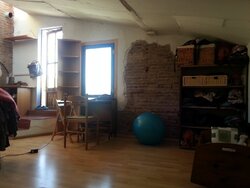Hi Everyone,
Happy to there is such a dedicated community of experts out there as this is the first wood burning stove I'm hoping to buy.
I live in a community on the outskirts of Barcelona, Spain and the only source of heet that we have is wood.
I'm looking for a model to heat my room (+/- 40m2). I def want a good amount of thermal mass and to have a glass door to see the flames. I would also like the stove to be as efficient as possible as we are cutting our own wood and any time saved with that would be great.
In particular I've found these two models that I believe could fit my purposes well.
Invicta: Sedan 10 (+/- €900) --> http://www.invicta-sa.com/portail/en/produits/chauffage/128-poele-fonte-sedan-10.html
Efel: S33 (+/- €1800) --> http://www.efel.be/nl/the-s-series-28.htm
I believe the Efel to be a better make but I'm not sure if this is true as it's more based on instinct than any facts and I'm still wondering that even if it is better does this justifiy the fact that it's so much more expensive.
Also any other models that could compete with these two would be interesting to hear.
ohh yeah the whole remote control thing on the S33 is nice but this doesn't interest me that much I'm more about durability, sustainabililty, long continous burn, etc.
Hoping to hear your thoughts on the matter...
All the best,
Daniel
Happy to there is such a dedicated community of experts out there as this is the first wood burning stove I'm hoping to buy.
I live in a community on the outskirts of Barcelona, Spain and the only source of heet that we have is wood.
I'm looking for a model to heat my room (+/- 40m2). I def want a good amount of thermal mass and to have a glass door to see the flames. I would also like the stove to be as efficient as possible as we are cutting our own wood and any time saved with that would be great.
In particular I've found these two models that I believe could fit my purposes well.
Invicta: Sedan 10 (+/- €900) --> http://www.invicta-sa.com/portail/en/produits/chauffage/128-poele-fonte-sedan-10.html
Efel: S33 (+/- €1800) --> http://www.efel.be/nl/the-s-series-28.htm
I believe the Efel to be a better make but I'm not sure if this is true as it's more based on instinct than any facts and I'm still wondering that even if it is better does this justifiy the fact that it's so much more expensive.
Also any other models that could compete with these two would be interesting to hear.
ohh yeah the whole remote control thing on the S33 is nice but this doesn't interest me that much I'm more about durability, sustainabililty, long continous burn, etc.
Hoping to hear your thoughts on the matter...
All the best,
Daniel



